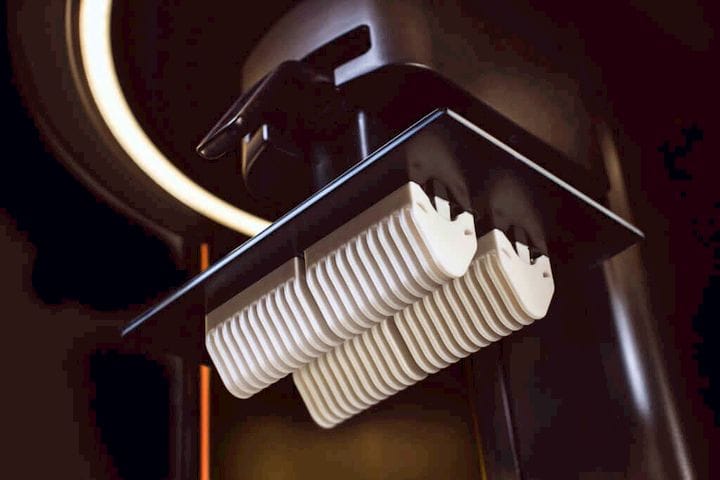![Carbon's new MPU 100 material for the medical market [Source: Carbon]](https://fabbaloo.com/wp-content/uploads/2020/05/image-asset_img_5eb0a7dcc7326.jpg)
Carbon announced a new material this week, as they often do, but this one is a bit different.
The company has grown significantly since it launched a couple of years ago with great fanfare surrounding their “CLIP” technology that provides a means for rapid resin-based 3D printing. Since then the company has attracted significant investment, and has installed a considerable number of machines with manufacturers.
That’s their strategy: to install machines with manufacturers. They have smartly designed their hardware, software, services, materials to fit within the sometimes quite restrictive financial and technical envelopes found in manufacturing operations.
One very intriguing approach they’ve been delving into recently is through software generation of complex 3D models. The idea is that if they attract the attention of a particular manufacturer, that manufacturer has to be able to efficiently design new types of products that take advantage of the 3D printing technology. Unfortunately, most manufacturers don’t have a clue about that simply because they’ve never had to do that.
Carbon’s idea was to equip them with 3D design software that could automatically generate complex foam-like designs to short circuit the problem. This approach could enable them to more easily sell equipment, services and materials to more manufacturers.
So far their strategy is working: they’ve made deals with several large manufacturers to install production gear. Perhaps the most notable so far is their arrangement with Adidas, where the midsole of their FUTURECRAFT shoe is actually 3D printed on each and every shoe. No prototyping here!
It’s a good strategy and makes sense for manufacturers.
But then I saw their announcement of MPU 100 (Medical Polyurethane 100). Carbon explains:
“This white polymer resin provides an unparalleled combination of mechanical strength, biocompatibility and sterilizability, making it optimally designed for components of medical systems, skin-contact devices, drug-contact devices, and single-use medical device applications.”
And:
“With the growing need for medical tools that are easy to produce, versatile, and also strong and durable enough to withstand demanding medical environments, MPU 100 offers an advanced solution for producing end-use parts such as complex adaptors for diagnostic analysis systems, textured instrument handles, single use instruments, and bioprocessing components.
Each of these applications brings distinct manufacturing opportunities, such as targeting better user experiences with complex geometries and textured surfaces, consolidating multi-part assemblies into one printed part, and pursuing a more customized portfolio with low-volume, high-mix part production.”
The new material offers certain features that will be attractive to the medical market:
- Engineering-grade material with excellent abrasion resistance
- Tested to USP VI and ISO 10993-5 and -10 biocompatibility
- Compatible with ethylene oxide, e-beam, and gamma sterilization methods
- Maintains its biocompatibility post-sterilization
- Compatible with common disinfectants
- Certificate of Analysis available
- Master file available with FDA
MPU 100 is their very first medical-grade production material. Before this moment they would not be able to sell significantly into that market. Now they can, but this raises some questions
Does this mean that Carbon is now entering a new market? What might this mean to their bottom line? What kind of products might they be intending on enabling for medical manufacturers?
And finally, how will they be able to leverage their advanced complex 3D design system for an entirely new market?
I think this could be a good move for Carbon, as the medical market is quite large and already accustomed to high pricing for components, much like the aerospace industry. The problem, as always, will be the ingenuity of those in that industry to invent new products.
Via Carbon











The fate of major 3D printing conferences in 2020 is unclear with the ongoing virus outbreak. We have thoughts on what it could mean.